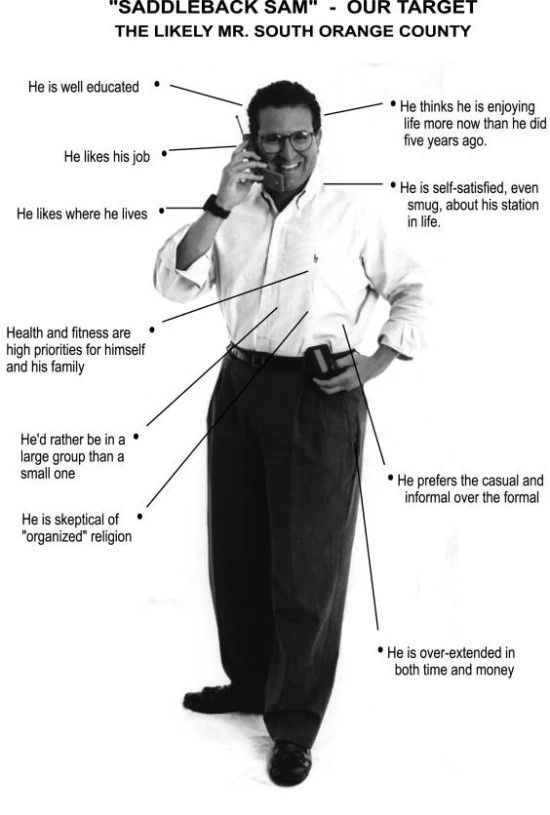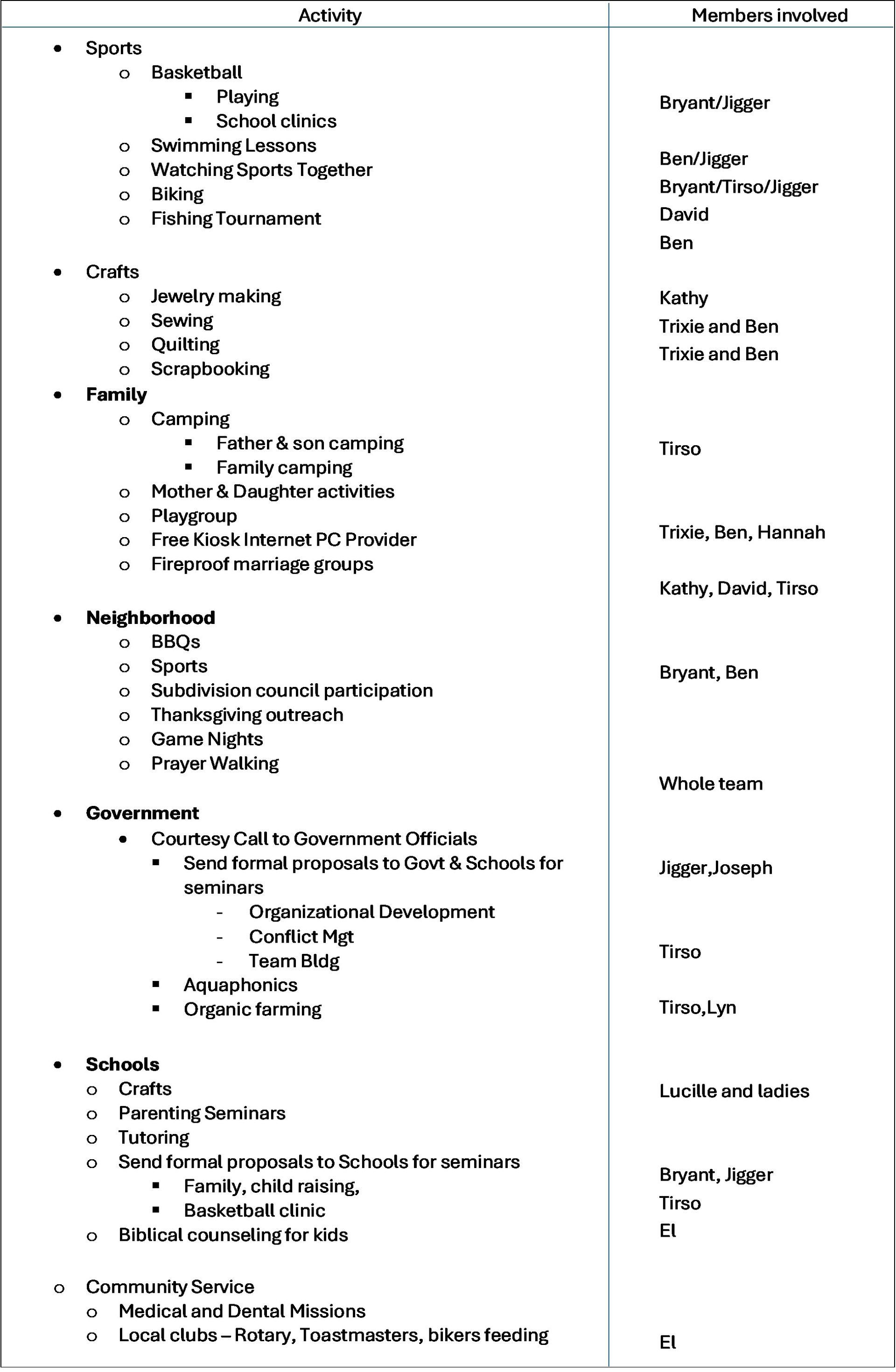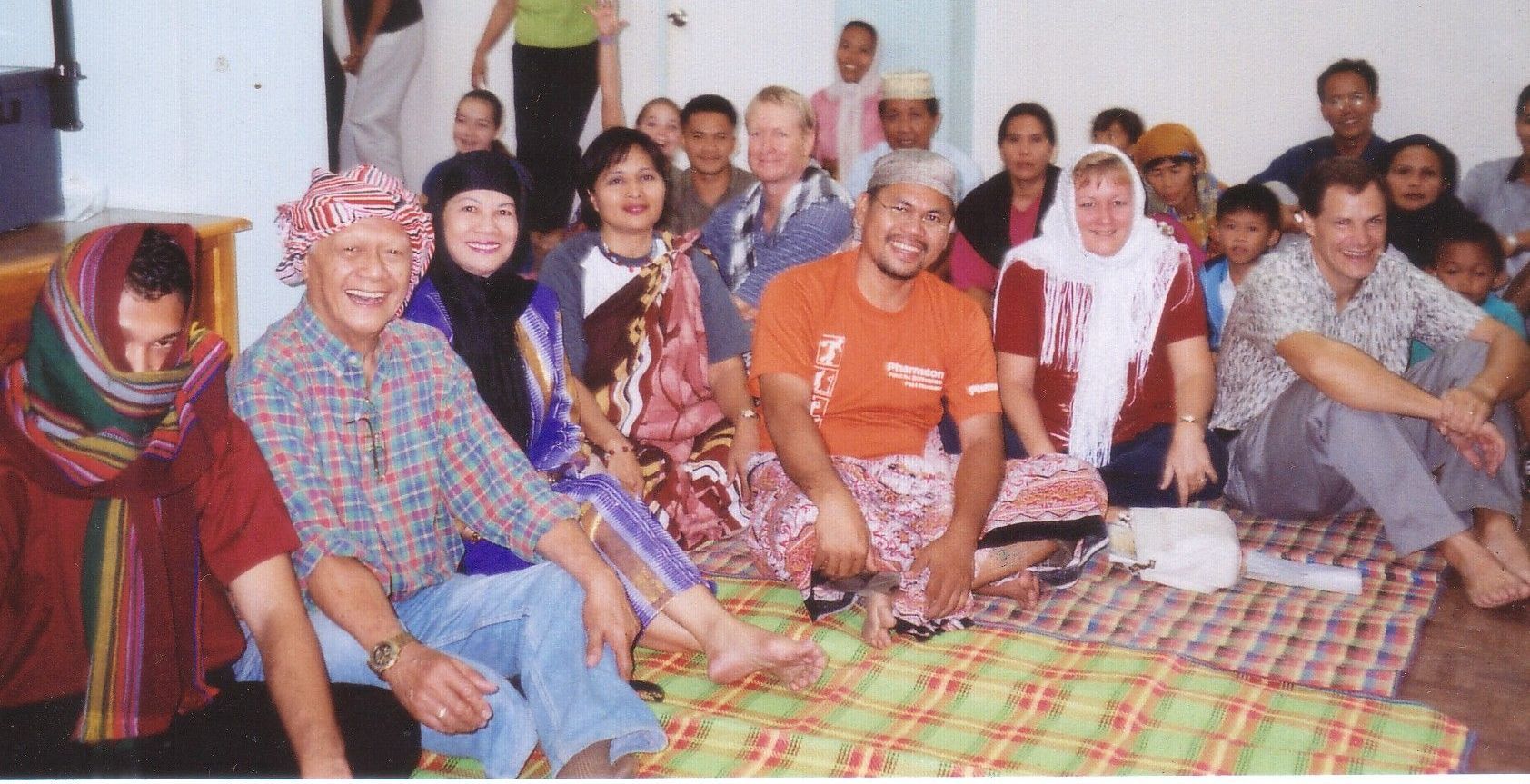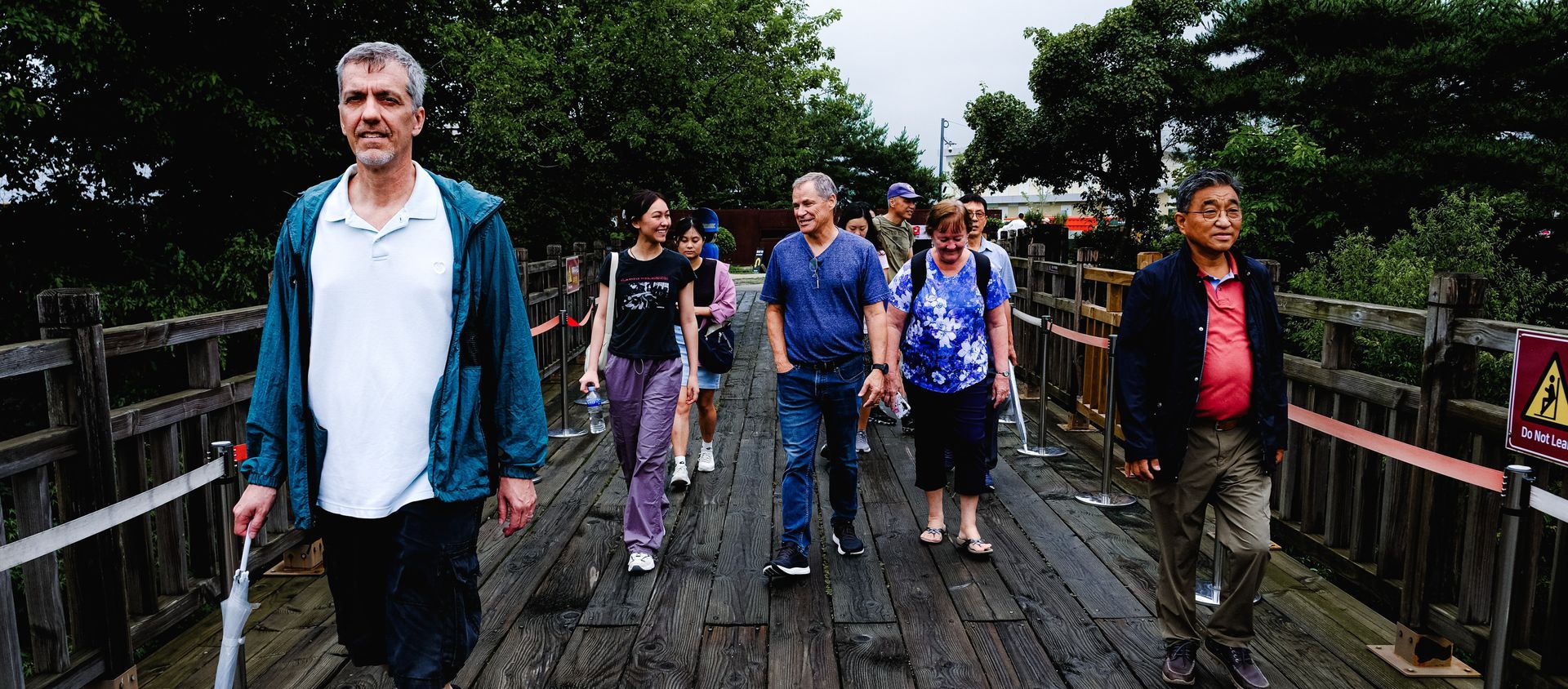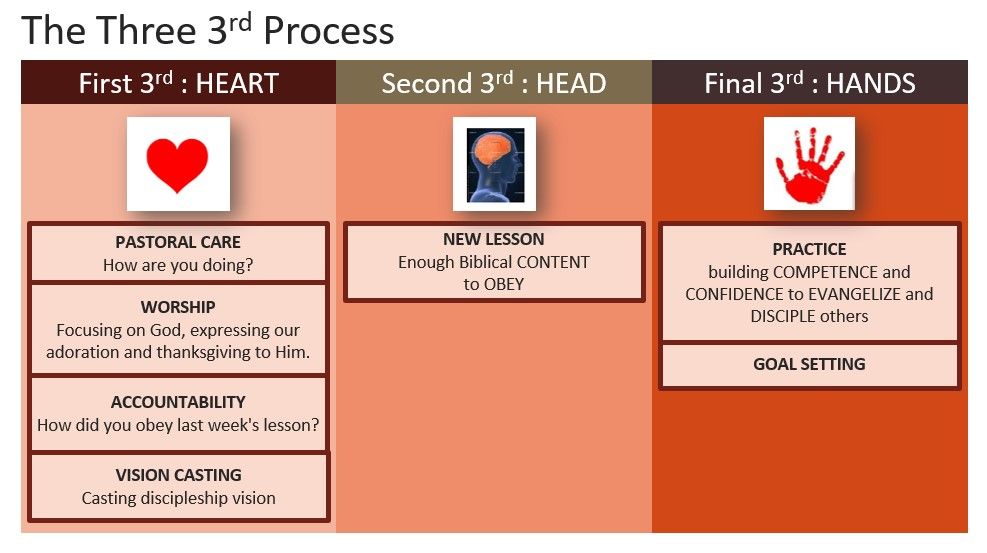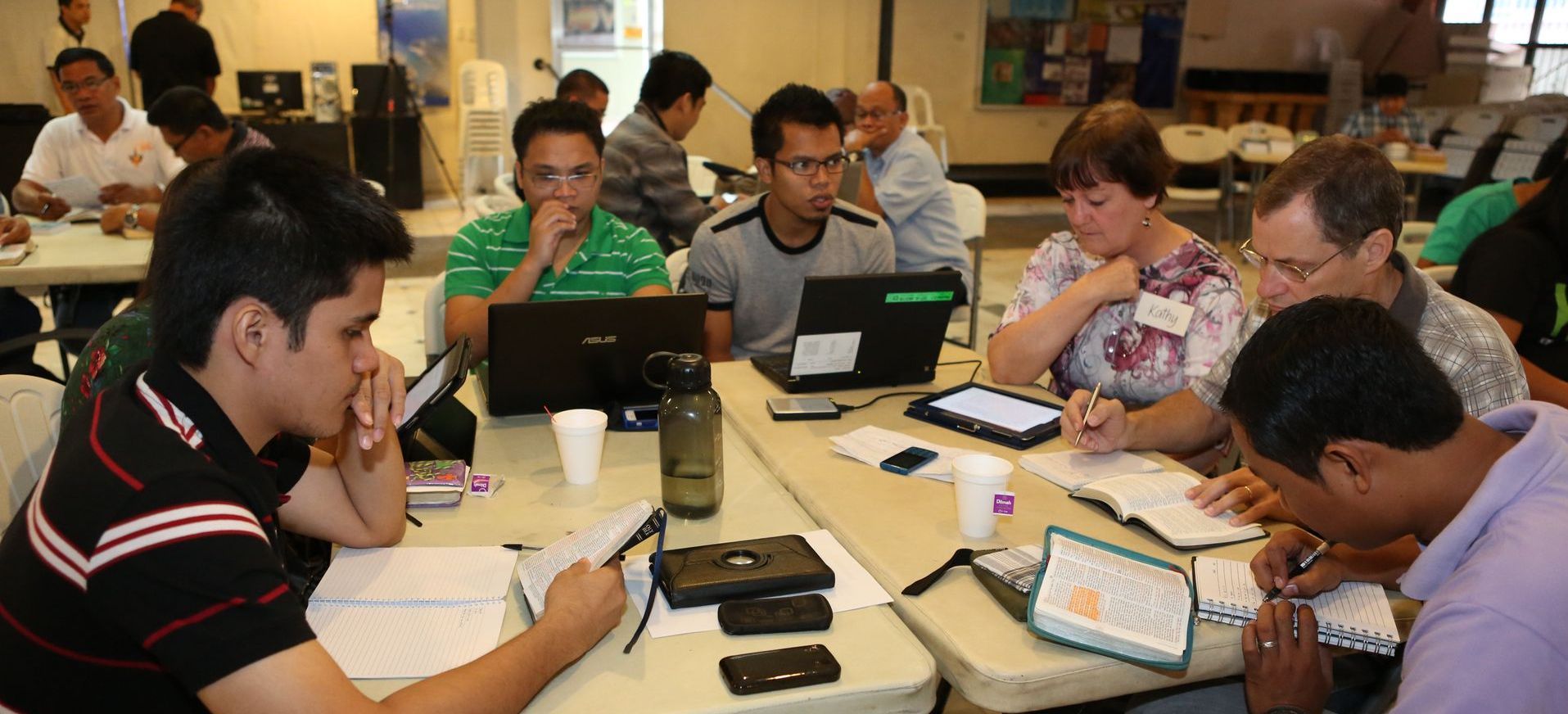I’m new in this place. I don’t know anyone. Where do I begin?
How do we get started when we enter a new town or city? In this blog, we will provide a few tools you may be able to use to get started in Connecting with the local people. Some of the tools you will find are...
- Discovery Questions to know your people.
- A Brainstorming tool for your team to help you determine how you can enter their world.
- A way to draw out your target population
IT ALL STARTS WITH DEPENDENT PRAYER
When entering a new area, there is no question that we need to begin with prayer because it is the Spirit who opens peoples’ hearts to understand their need for Christ. I had a prayer partner during my Bible College days, and we would pray, even back then, that God would be going ahead of us and preparing souls for when we arrived in the ministry area. As I look back on my life in winning souls and planting churches, I can honestly say that I believe that all those who came to Christ were on a spiritual journey before I came along into their lives with the gospel. God had been working with them and preparing them even when they were unaware of His work in their lives. Every new team should have an intentional prayer strategy.
GOD WORKS THROUGH RELATIONSHIPS
But it has been built into God’s plan to use human relationships as His main element in opening doors for the gospel. And that is our experience. Some I had to
befriend and join in their journey toward Christ and it took time (one friend took many years to surrender to Christ, but later on he became one of our elders and preachers in the church.) Others were at the door and all I had to do was open the door with the gospel key and they were ready to step through.
Today we want to talk about
how to connect with people in the first place so they will give opportunity for us to share Christ with them. In a survey of people over 16 years old who came to Christ, almost all of them said that the main factor in their decision to follow Christ was a relationship with a real Christian. (Life2life p.12)
This means that if we are going to be able to lead people toward a personal relationship with Christ,
- we need to have a personal connection to them,
OR
- we have to have people with us in their relational networks who can help us reach them for Christ.
Our fastest church plant happened when we could hardly find any missionaries to work with us. We ended up developing and training a group of local believers to help us reach, win and disciple their own people. These people already had networks of relatives and friends who knew and trusted them, so the gospel could spread quickly. These local believers fall into a similar category to the ones Jesus called
“persons of peace” who can provide natural openings for the acceptance of the messenger and the message.
But when we are entering a new area, we need to take extra time to connect with the local people, and establish ourselves as trustworthy people. I believe this is part of the reason Jesus taught His missionary trainees in Matthew 10 to "Heal the sick" and "Preach the Gospel." The healing was to minister to their felt needs in order to validate the messenger and prepare their hearts for the Gospel message.
INTERESTS AND NEEDS
This means we have to
understand their Interests and Needs, and
connect with them in their world. In our team building retreats, we would spend quite a bit of time
brain storming on a white board as to what the Interests and the Needs of the community were, and how we could connect with their needs and interests; how we could participate in their AREAS OF INTEREST and help meet their AREAS OF NEED.
GO OUT AND DISCOVER
This discovery process involves going out and discovering by
watching, asking and listening to find out…
- Where they live
- Where they go to relax and recreate
- What they do to relax and recreate
- What are their preferred ways of communicating
- What they do with friends and family
- Where they live, their neighborhoods
- What and when they celebrate and how they do it
- Where and when they vacation
- Whether they have free time during the day, and how they use it
- What their dreams and ambitions are
- Where they meet to eat
- What their daily rhythms are of eating, working, resting, fellowshipping, recreating
- In what areas they would like to improve their personal and professional lives
- What brokenness exists in the community
- What the areas of felt need are
- How their religious beliefs affect their lives
Each team member's discoveries should be shared with the whole team.
One of the young couples that Kathy and I were able to reach were neighbors of ours. One time I just asked them, “What do you do here in the city in your free time?” Their answer was, “Restaurant Hopping. We meet with friends and try out different restaurants and go somewhere else for dessert and coffee. We go to different places each time we meet.”
Kathy and I thought, “We can do that,” and so we did, with them and with several other couples, becoming close friends in the process and having wonderful opportunities to talk about our faith.
SADDLEBACK SAM
Rick Warren in his book, “Purpose Driven Church” took time to draw a picture of
Saddleback Sam, a typical young adult living in Saddleback, and to write out characteristics of Him to help him and his team visualize who they were trying to reach.
CONSOLACION CHRIS
At one point we did the same, brainstorming as a team, with "Consolacion Chris," a typical resident of our target community. Of course, there was a lot more that could have been included, but here it is…
Consolacion Chris
- Very busy, young couples (30’s),
- Living in start-up houses in compact subdivisions,
- Middle-end housing (2-5 million Pesos),
- Not so many single young professionals,
- Beginner families,
- College grads,
- Tech savvy
- Private schools for their kids, kids speak English
- Moms or helpers pick up kids
- Guys love basketball and biking
- Most commute and work in the city, not much work available here in Consolacion,
- Roman Catholic
- Spend free time in the only airconditioned mall in the city
BRAINSTORMING INTERESTS AND NEEDS
After describing all we could about the target group, we did our brainstorming on ways we could connect with our community in the two areas of their Interests and Needs. It helped us determine that if that's what Consolacion Chris is like, our efforts need to be on what effectively connects us to their world.
See the chart below…
1. Start with just listing all the ways we on the team can possibly connect with them. This list will depend on who is on the team.
2. Narrow down the list to what we can realistically do.
3. Let team members state where they would like to be involved.
4. Determine what each one will actually start doing.
5. Determine what activities the team will do together.
A brainstorming example from one of our team retreats

